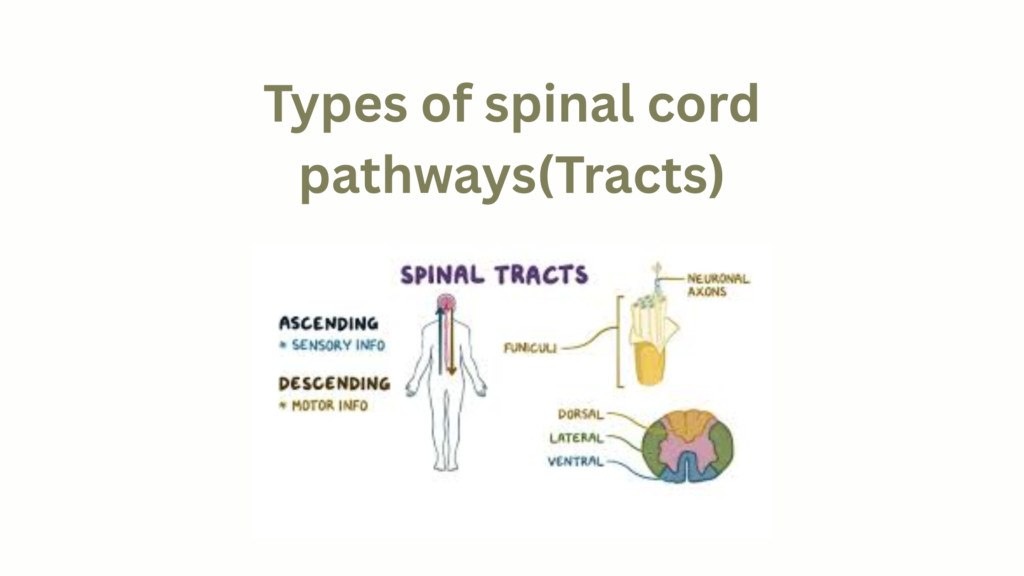
The spinal cord contains various neural pathways, or tracts, that facilitate communication between the brain and the body. These tracts are categorized into ascending (sensory) pathways and descending (motor) pathways, each serving distinct functions.
🧠 Ascending (Sensory) Pathways
These pathways transmit sensory information from the body to the brain, enabling perception of touch, pain, temperature, and proprioception.
1. Dorsal Column–Medial Lemniscus (DCML) Pathway
- Function: Transmits fine touch, vibration, and proprioception sensations.
- Pathway: First-order neurons enter the spinal cord and ascend in the dorsal columns (gracile and cuneate fasciculi). They synapse in the medulla, where second-order neurons decussate and ascend as the medial lemniscus to the thalamus, and then to the somatosensory cortex.
- Clinical Relevance: Damage below the decussation point results in ipsilateral loss of sensation; above the decussation, contralateral loss occurs.(en.wikipedia.org)
2. Spinothalamic Tract
- Function: Transmits pain, temperature, and crude touch sensations.
- Pathway: First-order neurons synapse in the dorsal horn of the spinal cord. Second-order neurons decussate at the anterior white commissure and ascend to the thalamus. Third-order neurons relay signals to the somatosensory cortex.
- Clinical Relevance: Lesions can lead to loss of pain and temperature sensation on the contralateral side of the body.
3. Spinocerebellar Tracts
- Function: Convey proprioceptive information to the cerebellum for coordination of movement.
- Pathway: First-order neurons synapse in the spinal cord, and second-order neurons ascend ipsilaterally to the cerebellum.
- Clinical Relevance: Damage can result in ataxia and coordination deficits.
🧠 Descending (Motor) Pathways
These pathways transmit motor commands from the brain to the spinal cord and muscles, facilitating voluntary and involuntary movements.
1. Corticospinal Tract
- Function: Controls voluntary motor movements, particularly fine motor skills.
- Pathway: Originates in the primary motor cortex, descends through the internal capsule, and decussates at the medullary pyramids. It then descends in the lateral white matter of the spinal cord.
- Clinical Relevance: Damage can lead to contralateral weakness or paralysis.
2. Reticulospinal Tract
- Function: Regulates posture and locomotion.
- Pathway: Originates in the reticular formation and descends bilaterally in the spinal cord.
- Clinical Relevance: Lesions can result in postural instability and impaired locomotion.
3. Rubrospinal Tract
- Function: Facilitates voluntary movement, particularly of the upper limbs.
- Pathway: Originates in the red nucleus of the midbrain, decussates, and descends in the lateral column of the spinal cord.
- Clinical Relevance: Damage can lead to tremors and impaired motor coordination.
4. Vestibulospinal Tract
- Function: Maintains balance and posture by regulating muscle tone.
- Pathway: Originates in the vestibular nuclei and descends ipsilaterally in the spinal cord.
- Clinical Relevance: Lesions can result in balance disorders and increased risk of falls.
